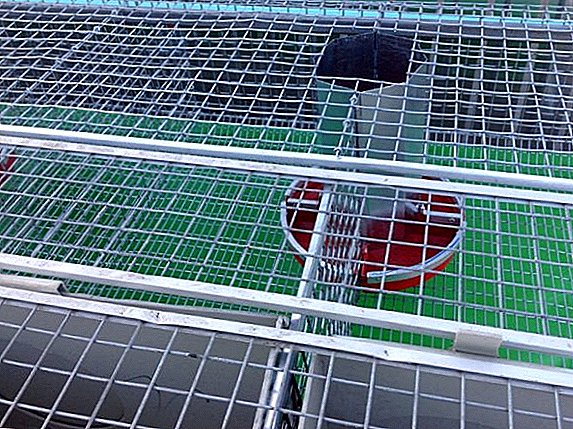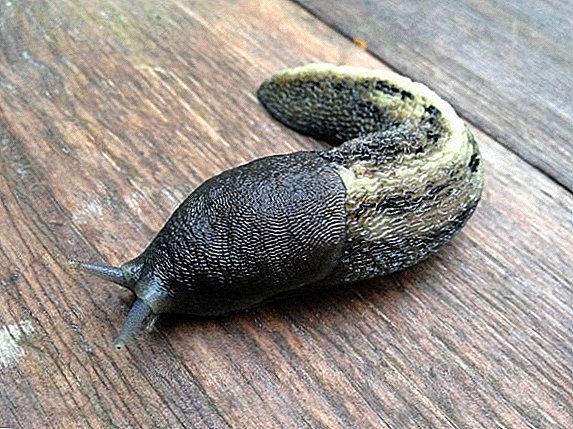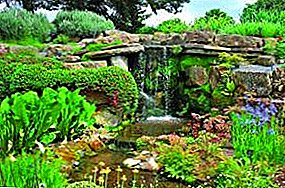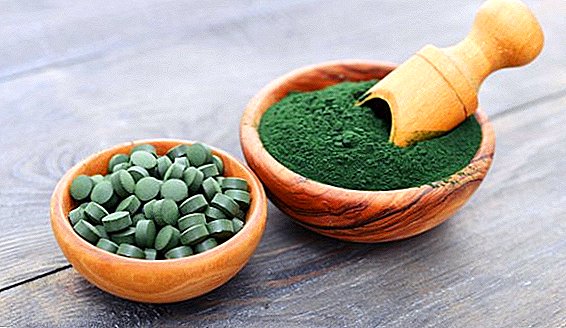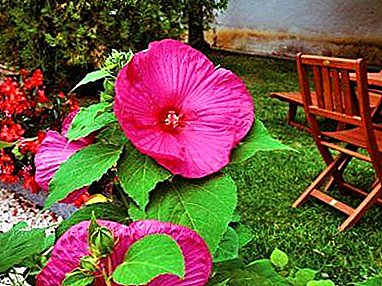
Hibiscus is primarily associated with indoor small tree. The herbaceous form can grow in the garden, but the main difference is the imaginary large flowers of various colors.
From this article you will learn useful information about this plant and a description of its main varieties. Also here you can see their photos.
In addition, here it is told how to propagate the grassy hibiscus and how to care for it, so that it pleases with its appearance. Also, this material contains useful information about pests and diseases that can affect this plant.
About plant
Grass hibiscus belongs to the Malvaceae family. This is a herbaceous perennial plant. With the cold, the bush dies off, and in the spring it gives rise to shoots again. It blooms from June to October. Each flower lives about a day. Faded buds, regardless of grade, are immediately replaced by new ones.
Grassy hibiscus is also called a hybrid, since its hybrid varieties have become widespread.
The Latin name is Hibiscus moscheutos.
The most common varieties of grassy hibiscus belong to the species "Swamp Hibiscus". This species received this name because it was first discovered in the swamps on the Mississippi River. Later, some hybrid varieties of grassy hibiscus were bred in the USA by the Fleming brothers. They crossed three varieties:
- olfactory;
- pink;
- red.
Grassy hibiscuses are tall bushes with straight branches., large leaves and flowers. The latter are striking in their size, since some varieties can reach 40 centimeters in diameter. Grassy hibiscus can grow up to 3 meters in height.
Grassy hibiscus mainly grow in the subtropical climate of North America.
Description of varieties of grass marsh Hibiscus moscheutos and photos
"Kopper King"
Copper King is a little smaller than its brethren.: it can grow only up to 1.2 meters tall. The leaves are shaped like maple leaves and can change color depending on the air temperature. Their color ranges from dark green to coppery red. The flowers are about 40 centimeters in diameter, white-pink in color and decorated with bright pink stripes. The core is purple.
Copper King has a good disease resistance. Winter hardiness is high: this plant will withstand cold up to 34 degrees below zero. Perennial.

"Cranberry Crush"
Curberry Crash has an average height of from 90 to 120 centimeters. Bush shape is rounded. The leaves are green with purple streaks and have a pointed shape.
Flowers in diameter reach 25 centimeters and are painted in a rich burgundy color with dark stripes on the petals. The latter overlap in such a way that no gaps remain.
This variety is perennial, characterized by high frost resistance (up to -34 degrees).

"Old Yella"
Old Yella reaches 1 meter in height. Bush strong, with landscaping from the roots. The leaves are maple, pinnate in color, green in color, but acquire a purple hue in bright sunlight.
Flowers grow up to 30 centimeters in diameter and have petals with a wavy edge. Their color is white or pale cream with a bright red core. Buds have a creamy shade.
Street Old Yella tolerates winter well and is a winter-hardy perennial: it withstands cold up to 34 degrees below zero. This grade is perennial.

Care
Grassy Hibiscus Unpretentious and require the most simple care.
- Planted this plant is necessary in late spring or early summer. Each bush should have its own space - from 1.5 to 3 meters.
If the land at the site is very cold, it is necessary to plant the roots of the plant more deeply when planting.
- The place is suitable bright, but without direct sunlight. It should also be protected from drafts.
- For good flowering need loose and well-drained soil. You can also add to the ground rotten needles.
- During growth and during a drought, more frequent watering is required, but stagnant moisture should not be allowed. If the air is too dry, then the bush should be additionally sprayed in the evening.
- During the growth of the plant it is necessary to feed. Even in spring, the flower can be fertilized with organic matter, and wood ash is well suited for the autumn season.
- In the winter, the stems are cut by 10-15 centimeters, then watered and covered with sawdust or lapnik. In the spring hibiscus is growing very quickly.
- For more lush flowering, you need to pinch the flowering buds.
Breeding
You can propagate grassy hibiscus:
- seeds;
- grafting;
- or by dividing a bush.
The latter method is the fastest; when grafting to flowering, you need to wait about 2 years, and when planting seeds, you can only admire full-blown hibiscus after 3 or 4 years.
Important: Let them be seed grown and the longest breeding method, but plants planted this way are more resistant to stress.
- When breeding seeds should first prepare them:
- leave for 5-7 days wrapped in a damp paper towel;
- after swelling they can be placed in a container with soil;
- after sprinkle with earth and irrigate.
For about 3 weeks it is necessary to create greenhouse conditions for sprouts: it is necessary to cover the container with glass and keep it in a bright and warm place. If sprouts appeared at least 2 leaves, then they can be dive.
 Propagation by cuttings are usually carried out in summer or autumn:
Propagation by cuttings are usually carried out in summer or autumn:- cuttings cut from the top of the bush and put in the water;
- then planted in a pot and create greenhouse conditions.
Only a year later, flowers can be planted in the ground at a permanent place.
Cut cuttings must be at an oblique angle.
- They are engaged in division only in spring:
- a flower is dug up;
- divided into parts;
- and re-seated.
Diseases and pests
From insects to grassy hibiscus are dangerous:
- aphid;
- whitefly;
- spider mite
You can fight these pests with special insecticides.or you can try folk remedies: an infusion of onion peel with soap or glue traps.
Violations of the rules of care also cause disease in the plant:
- Improper watering leads to falling leaves.
- Unbalanced top dressing - to chlorosis (yellowing of leaves).
- Low humidity adversely affects flowering.
Similar flowers
- Those who like a big flower in a grassy hibiscus will also enjoy the grassy peony. The diameter of its flowers can reach 26 centimeters.
- Clematis varieties "Andromeda" also have a large cream-pink flower, whose diameter is approximately equal to 20 centimeters.
- Stock-roses can create a pleasant background for the garden, and the shape of their flowers resembles hibiscus flowers.
- The shape is similar to the hibiscus and flowers of Mallow Musk.
Herb hibiscus can be an excellent decoration of the garden: it can serve as a beautiful background, and be the main star in the collection. It is not exacting at all, and even beginner breeders will be pleased with its beauty.


 Propagation by cuttings are usually carried out in summer or autumn:
Propagation by cuttings are usually carried out in summer or autumn:


